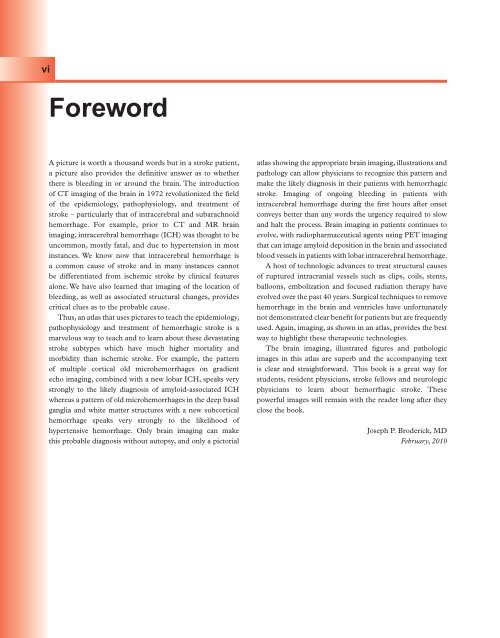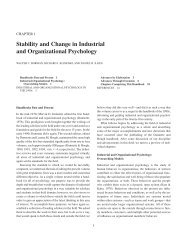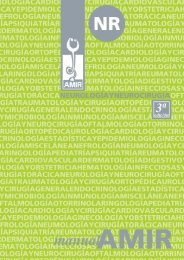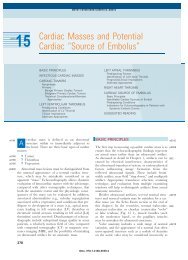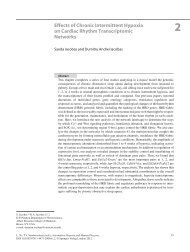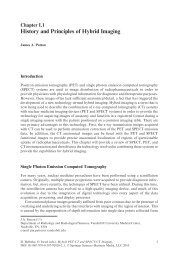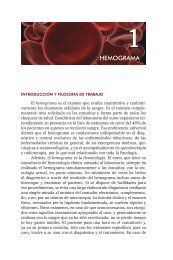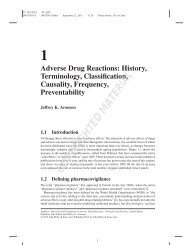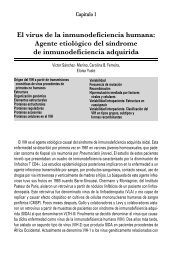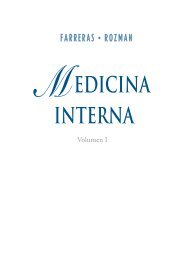HemorrHAgIc STroke - Clinical Publishing
HemorrHAgIc STroke - Clinical Publishing
HemorrHAgIc STroke - Clinical Publishing
You also want an ePaper? Increase the reach of your titles
YUMPU automatically turns print PDFs into web optimized ePapers that Google loves.
vi<br />
Foreword<br />
A picture is worth a thousand words but in a stroke patient,<br />
a picture also provides the definitive answer as to whether<br />
there is bleeding in or around the brain. The introduction<br />
of CT imaging of the brain in 1972 revolutionized the field<br />
of the epidemiology, pathophysiology, and treatment of<br />
stroke – particularly that of intracerebral and subarachnoid<br />
hemorrhage. For example, prior to CT and MR brain<br />
imaging, intracerebral hemorrhage (ICH) was thought to be<br />
uncommon, mostly fatal, and due to hypertension in most<br />
instances. We know now that intracerebral hemorrhage is<br />
a common cause of stroke and in many instances cannot<br />
be differentiated from ischemic stroke by clinical features<br />
alone. We have also learned that imaging of the location of<br />
bleeding, as well as associated structural changes, provides<br />
critical clues as to the probable cause.<br />
Thus, an atlas that uses pictures to teach the epidemiology,<br />
pathophysiology and treatment of hemorrhagic stroke is a<br />
marvelous way to teach and to learn about these devastating<br />
stroke subtypes which have much higher mortality and<br />
morbidity than ischemic stroke. For example, the pattern<br />
of multiple cortical old microhemorrhages on gradient<br />
echo imaging, combined with a new lobar ICH, speaks very<br />
strongly to the likely diagnosis of amyloid-associated ICH<br />
whereas a pattern of old microhemorrhages in the deep basal<br />
ganglia and white matter structures with a new subcortical<br />
hemorrhage speaks very strongly to the likelihood of<br />
hypertensive hemorrhage. Only brain imaging can make<br />
this probable diagnosis without autopsy, and only a pictorial<br />
atlas showing the appropriate brain imaging, illustrations and<br />
pathology can allow physicians to recognize this pattern and<br />
make the likely diagnosis in their patients with hemorrhagic<br />
stroke. Imaging of ongoing bleeding in patients with<br />
intracerebral hemorrhage during the first hours after onset<br />
conveys better than any words the urgency required to slow<br />
and halt the process. Brain imaging in patients continues to<br />
evolve, with radiopharmaceutical agents using PET imaging<br />
that can image amyloid deposition in the brain and associated<br />
blood vessels in patients with lobar intracerebral hemorrhage.<br />
A host of technologic advances to treat structural causes<br />
of ruptured intracranial vessels such as clips, coils, stents,<br />
balloons, embolization and focused radiation therapy have<br />
evolved over the past 40 years. Surgical techniques to remove<br />
hemorrhage in the brain and ventricles have unfortunately<br />
not demonstrated clear benefit for patients but are frequently<br />
used. Again, imaging, as shown in an atlas, provides the best<br />
way to highlight these therapeutic technologies.<br />
The brain imaging, illustrated figures and pathologic<br />
images in this atlas are superb and the accompanying text<br />
is clear and straightforward. This book is a great way for<br />
students, resident physicians, stroke fellows and neurologic<br />
physicians to learn about hemorrhagic stroke. These<br />
powerful images will remain with the reader long after they<br />
close the book.<br />
Joseph P. Broderick, MD<br />
February, 2010


